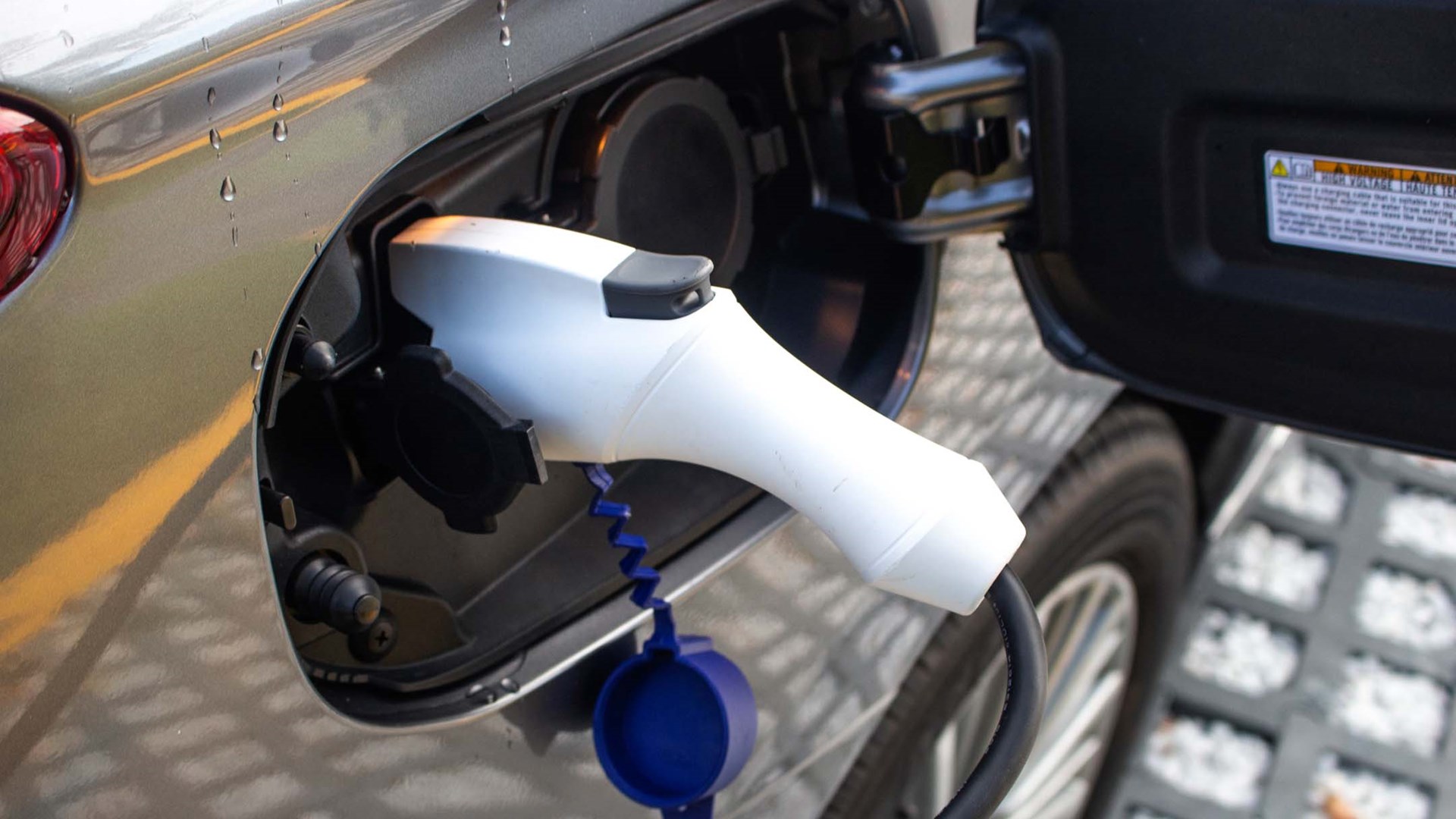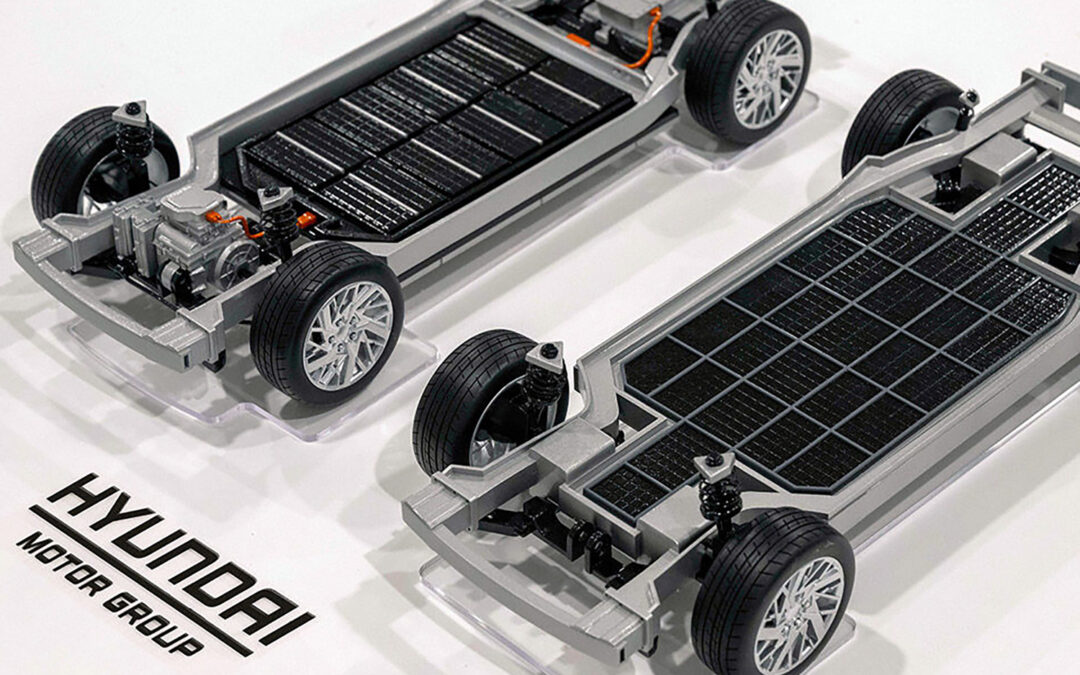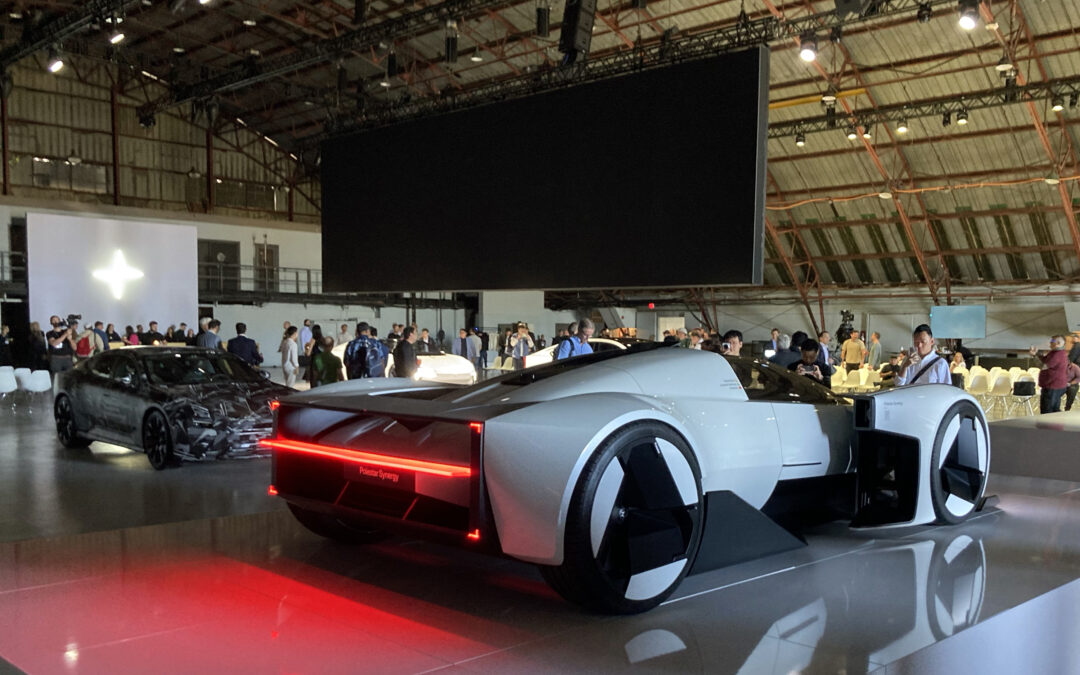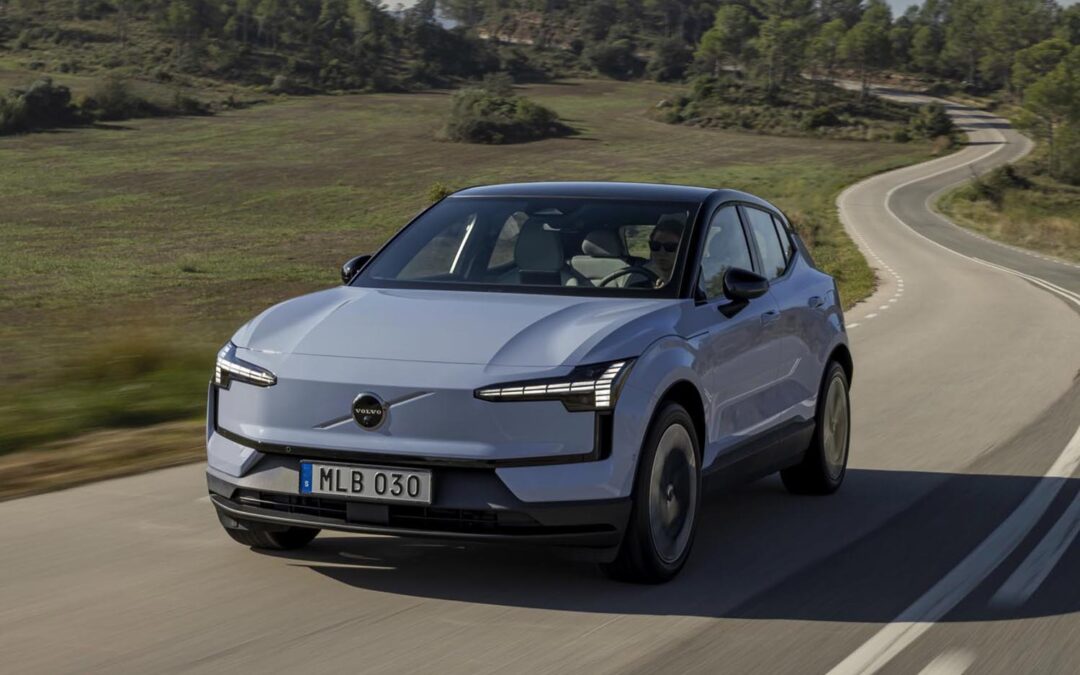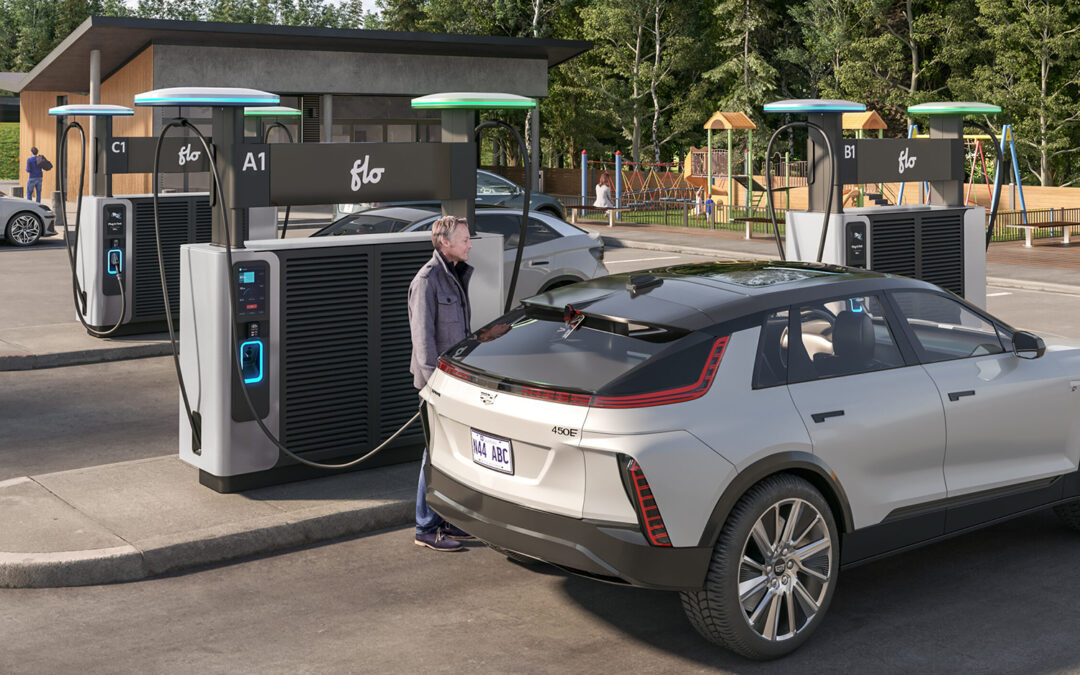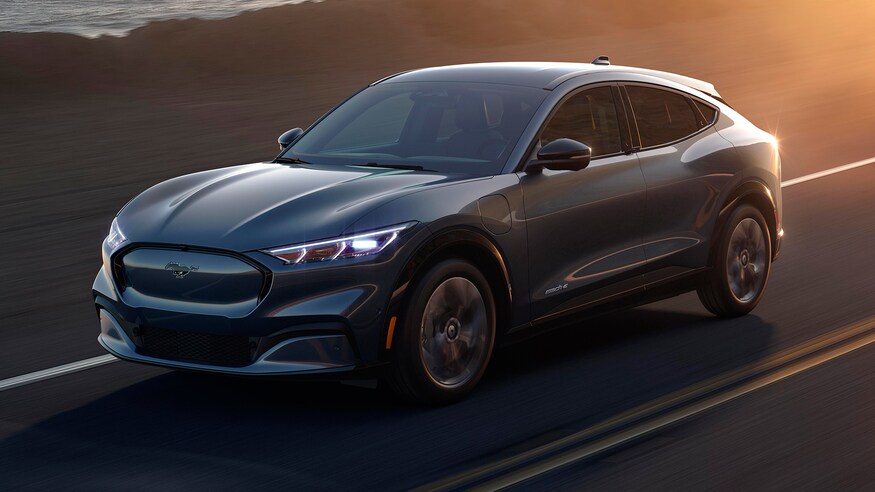With more Canadians considering sustainability in their major purchase decisions, there’s an increasing amount of action on the used car market for electric vehicles (EVs) and plug-in hybrid electric vehicles (PHEVs).
Both EVs and PHEVs utilize a rechargeable battery and electric motor for propulsion. In the case of an EV, there’s no gasoline engine, so the vehicle is totally electric. In the case of a PHEV, the battery and electric motor join forces with a conventional gasoline engine. Both EV and PHEV models come with their own pros and cons, as well as unique second-hand buying considerations.
Below, let’s dive into some specific information and models to help set you up for the most informed and efficient shopping and buying process possible.
What Is an EV?
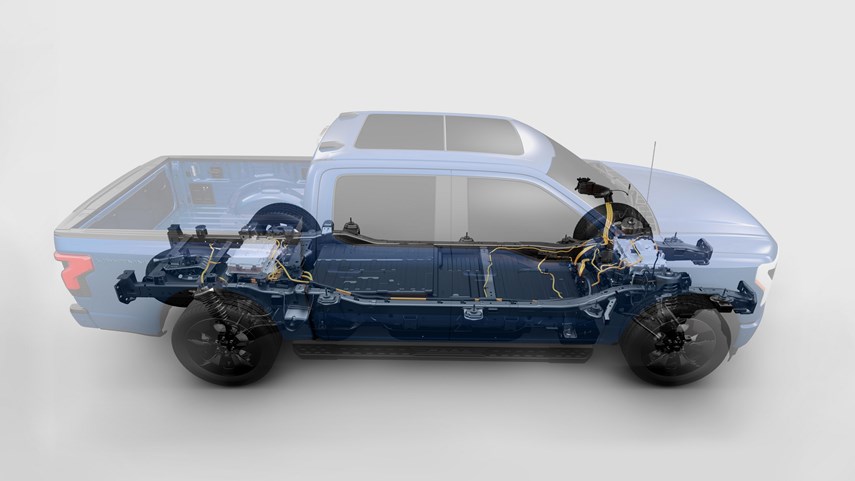
Ford F-150 Lightning
In an EV, the vehicle is propelled solely by power stored in a built-in battery. Many EV owners charge exclusively at home by plugging their vehicle in to recharge while they’re not using it. With proper Level 2 charging equipment – which should be installed by a professional – an eight- or 10-hour overnight charge can fill an EV’s battery from empty, pumping in enough electricity to drive hundreds of kilometres.
All EVs come with a cord and plug that can be used with any household outlet, and while this is a much slower way to charge, it’s a good backup option to have. A specialized Level 2 charger is faster, however, and is what many homeowners will opt for.
Otherwise, people can also recharge at public charging stations; and with more popping up all the time, it’s possible to own an EV without having a place to charge at home.
Advantages to owning an EV include low maintenance costs, low running costs, zero-emissions operation, and quiet, punchy performance. Drawbacks include reduced range in extreme cold, and the added time and planning required for charging on some longer trips.
What is a PHEV?
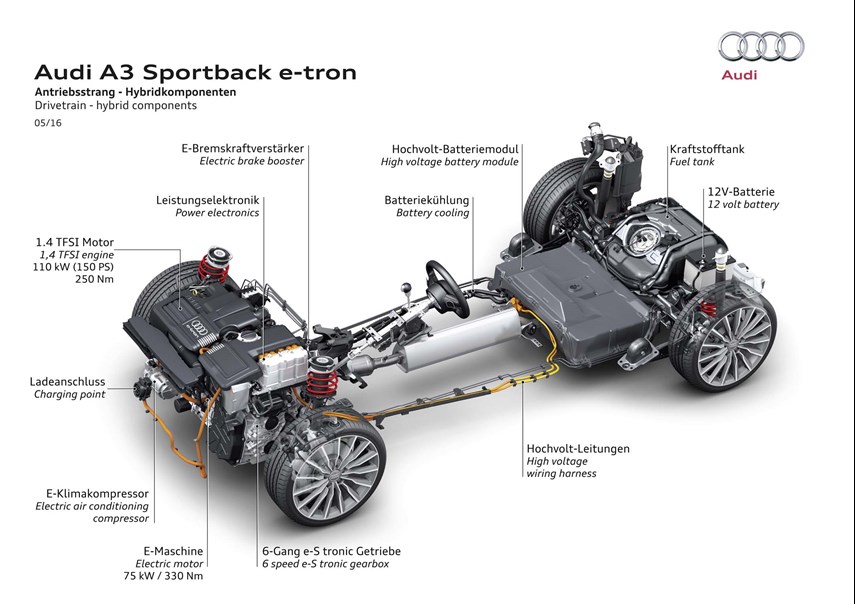
Audi e-tron PHEV
In simplified terms, a PHEV works just like an EV, but with gasoline backup power.
The battery in a PHEV can store enough energy for a few dozen kilometres of all-electric driving and you can charge it in the same way as an EV. Once the battery is depleted, there’s no need to recharge, however, since the gasoline engine turns on automatically and keeps you on the move. A PHEV allows drivers to handle shorter trips using solely electric power, while longer drives can be handled by the gasoline engine, which could make it more practical than an EV for someone who often takes long trips. Some PHEVs can also use the gas engine to charge the battery.
PHEV versions of the Chrysler Pacifica, BMW X3, and Mitsubishi Outlander can be recharged to enable approximately 30 to 50 kilometres of all-electric driving, depending on the model.
This is sufficient to get most Canadians off of gasoline for their daily commutes, reserving gasoline use solely for longer trips. Switching to a PHEV can see many families go from visiting the gas station a few times a month to a few times a year.
Remember that while recharging a PHEV saves fuel, plugging in is never mandatory. As long as there’s fuel in the tank, you’re good to go, so there’s no range anxiety.
Charging (Level 1 vs Level 2 vs Level 3)
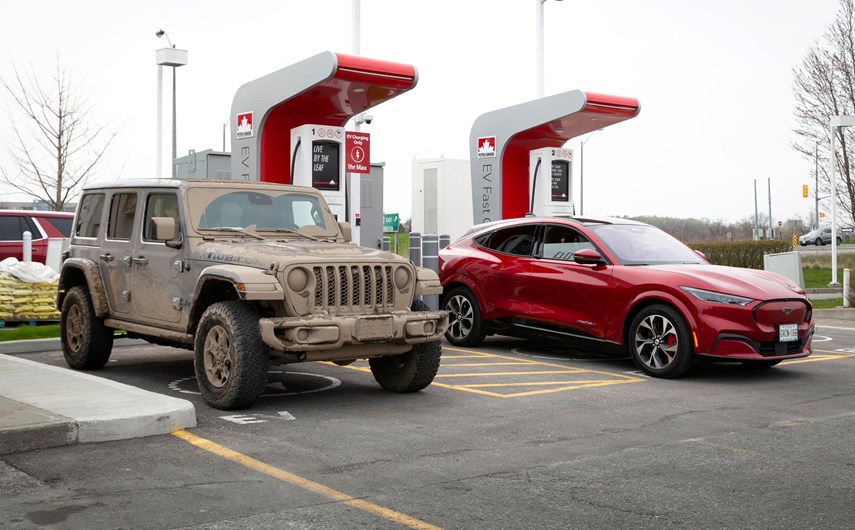
You’ll charge your EV or PHEV at one of three levels.
Level 1 is standard household voltage, using the same outlet as your electric lawnmower. This is the slowest way to recharge your vehicle’s battery, at a rate of about four kilometres per hour. On Level 1, recharging the battery in a PHEV vehicle is an overnight process. Recharging the much larger battery in an EV can take a few days.
Level 2 charging happens at 240 volts, and Level 2 chargers can be installed in most homes. Level 2 charging is much faster than Level 1 charging. On a Level 2 charger, refilling an empty PHEV battery takes just a few hours, and refilling an empty EV battery can easily be handled overnight.
Level 3 charging is the fastest way to charge an EV. Level 3 chargers are extremely powerful, and can’t be installed at home, though you’ll commonly find them available at public charging stations. On a Level 3 charger, an EV can add 10 kilometres of range (or more) per minute to its battery. A total recharge from empty is possible in an hour.
Level 3 charging is typically reserved for EVs, though the Mitsubishi Outlander PHEV is a notable exception. It is the only PHEV on our list with the ability to recharge at Level 3, meaning drivers can juice its battery at lightning speed while they shop or eat.
Note that the figures above are guidelines only, and that your results may vary.
Test Drive Tips for a Used EV or PHEV
When test driving a used EV or PHEV, a few special considerations and inspections can help make possible issues reveal themselves.
Check the charging components
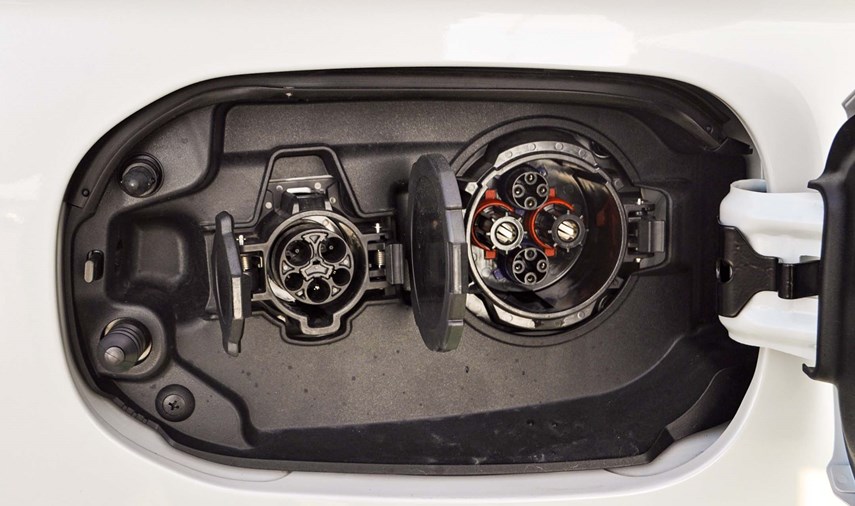
Both EVs and PHEVs come with a charging port covered by a door where you’ll connect a charger. On your test drive, be sure to confirm that the charge door and charge connection are sound.
Be sure to connect the vehicle to a charger (more than one, if possible) on your test drive and watch the charging process start. In some cases, a problem with the charge door mechanism or charging system can trigger an error message or warning light during this part of the process. If you notice this, have a professional assess of the cause of the problem (and the cost to repair it) before you buy.
Check the charging provisions included with the vehicle, too. Inspect the charge cable and connector and all associated components for signs of wear or damage to the insulation on the charging cable or its electrical prongs. Damaged charging equipment can be pricey to replace and represents a safety hazard.
Check the braking performance
Pay attention to the experience of braking in the EV or PHEV you’re test driving. The brakes (especially the rear brakes) in this type of vehicle typically do little work, which can put them at elevated risk of problems caused by rust and wear. That’s especially true if the vehicle was frequently left sitting for long periods, or frequently used on shorter trips. If the brake pedal feels weak during your test drive, get it checked out by a professional.
Check the service records
A used EV or PHEV that’s been regularly seen by its dealership is ideal for maximum peace of mind. Dealership technicians will check for things like safety recalls and software updates while a vehicle is in for regular servicing. Recall work and software updates help your vehicle operate more safely and reliably, and buying a vehicle that’s been regularly dealer-serviced increases the likelihood that this work has been performed already.
You may wish to visit a dealership yourself to have a technician pull the vehicle charging logs. Look for instances of fast-charging or long periods where the battery is left either full or empty, which can adversely affect the service life of the battery pack.
Will you need to replace the battery?
Like any car, an EV is a machine built from components that will eventually wear out and require servicing or replacement. The battery is one of those components.
How much will a new battery cost?
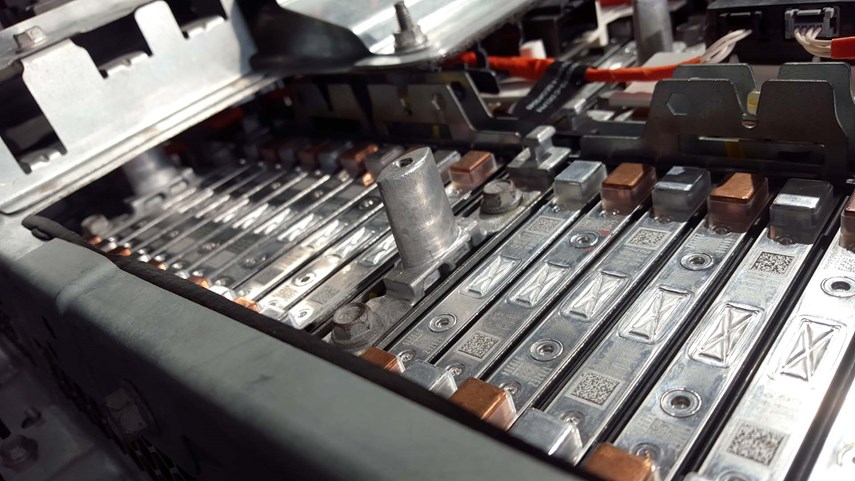
Replacement cost depends on a number of factors, including battery type (nickel–metal hydride or lithium-ion) and size. Modern EVs have numerous protective provisions built in to help prevent against degradation. For instance, battery packs are temperature controlled, charging levels and speed are monitored closely by onboard computers, and they reserve the very upper and lower ends of their charge capacities to avoid operating at their extremes.
In Canada, battery warranty coverage of eight years/160,000 km is the norm. Check the specifics of the vehicle you’re considering, as some battery warranties cover degradation if it exceeds a certain level. For instance, Volkswagen has an eight-year/160,000-km warranty on its EV batteries, which cover owners against defects and workmanship that causes the battery to degrade more than 70 per cent over that span. The automaker also lists some advice to help prolong the life of the battery, including the recommendation that drivers keep charge levels between 30 and 80 per cent in most situations. Drivers can use connected car apps and built-in scheduling to help manage their charging.
All batteries degrade over time. Here’s a handy tool here that allows shoppers to compare predicted battery degradation over time for different EVs. In normal conditions, this comparison tool shows battery degradation averaging about five and half years before a 10 per cent reduction in the battery’s overall health.
Other data suggests that this degradation can occur more quickly when the battery pack is old, when it’s frequently used in high temperatures, when it’s frequently charged at high current levels, and when it’s charged and discharged more often. Allowing your EV’s battery to spend prolonged periods in either a full or empty states of charge can degrade it as well. That’s why many EVs allow drivers to set charging limits, perhaps turning off the power once the battery is charged to 75 per cent.
Though many modern EVs can drive hundreds of kilometres on a charge, the average Canadian drives less than 50 kilometres a day. Many EV owners choose to charge their car strategically, maintaining only the charge they need, to help extend battery life.
Maintaining Your EV or PHEV
Finally, remember that whether electric, gasoline-powered, or some combination of the two, your next vehicle has specific maintenance requirements that need to be followed for it to run at maximum efficiency and to live the longest life possible.
The maintenance on an EV is minimal, though regular inspections may be required. Though it doesn’t have an engine, it still rides on rubber tires like virtually every other vehicle out there; be sure to check the tire pressure on a regular basis – and don’t forget about winter tires.
On a PHEV, you’ll still need regular oil and filter changes, and other maintenance and tune-up work from time to time. Many PHEV models use a conventional battery to power the vehicle’s accessories and electronics. This way, the larger drive battery can reserve its energy solely for driving the wheels. With that in mind, keeping the smaller, conventional battery in your PHEV healthy is a great way to prevent possible headaches and frustrations reported by some owners as their vehicles age. This might mean a pre-purchase battery inspection or replacement, or being sure to connect to a trickle-charger when you won’t be driving for an extended period.
Your new owner’s manual has the full scoop. Following its maintenance and care instructions to the letter is a great way to help maintain your vehicle’s quality and resale value, as well as the good standing of any remaining warranty coverage.
This article was originally published on AutoTrader.ca
